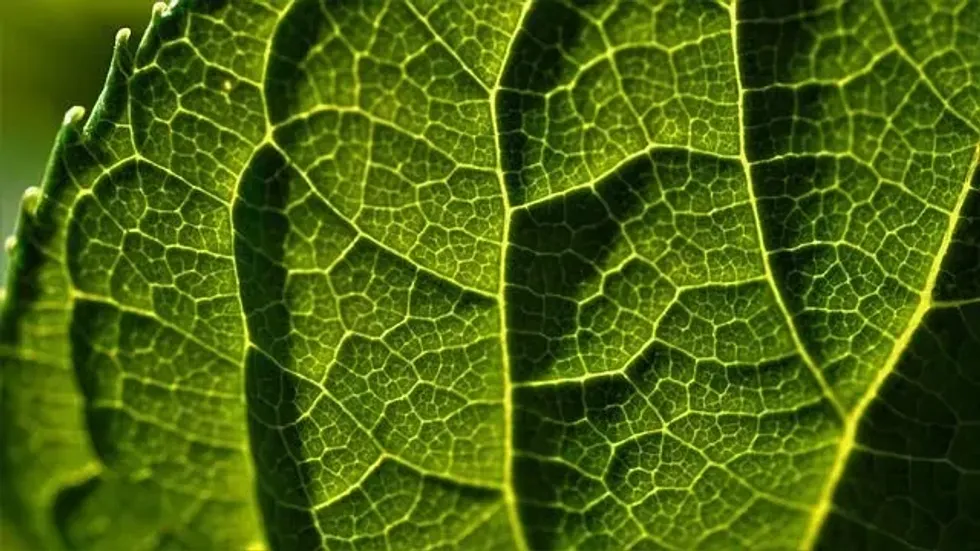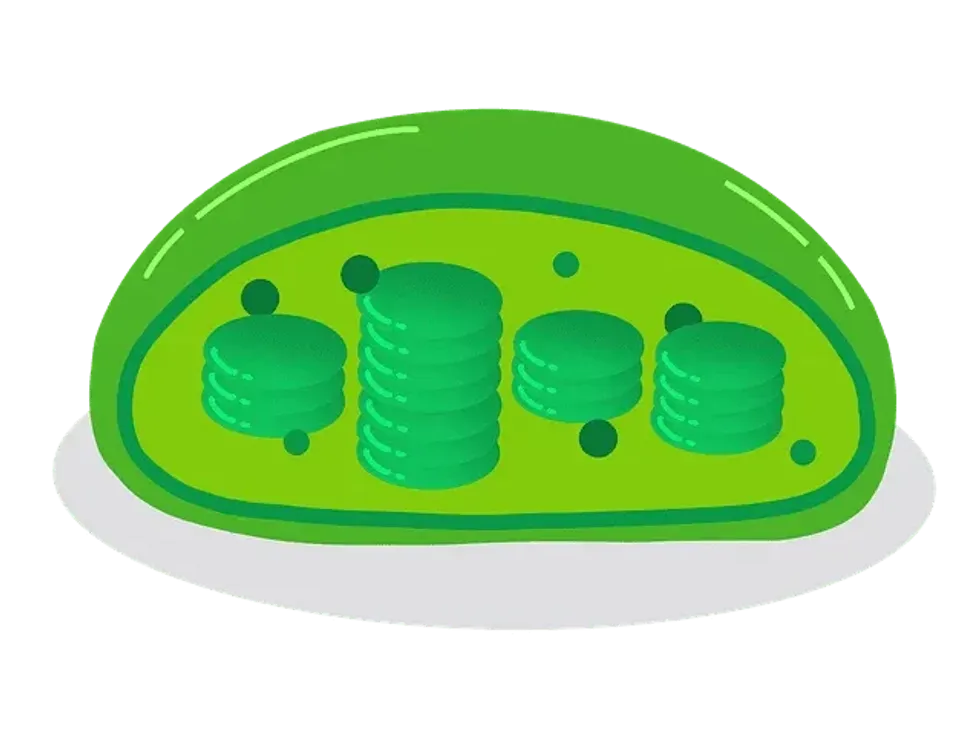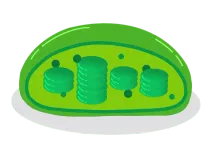Is A Plant Cell A Dynamic Part Of The Plant? Here Are Some Facts

We all eventually realized that plants have a life just like humans, animals, and other organisms.
Plants can grow, digest, reproduce, and starve to death. Discover what is inside the cell, how it is formed, looks like, and much more in the article below.
Plant biologists researching plant physiology or plant cell biology give us the attributes to explore various plant cells and their functions. Today, we've brought you some essential information about plant cells, and this study of plant structure provides us with an exploration of the environment.
As we proceed, please read our article to learn more about plants, such as why do plants need sunlight and what do plants need to survive.
Structure Of Cell
Cells are categorized into two types one is eukaryotic cells, which have a nucleus, and the other is prokaryotic cells, which lack a nucleus but still have a nucleoid region. Prokaryotes are single-celled organisms, whereas eukaryotes can be single-celled or multicellular organisms.
Plant cells are eukaryotic cells that can be found in plants where entire functions are carried out.
Hence, a plant cell is regarded as a dynamic part of the plant; it carries photosynthesis which is essential for plant growth.
Photosynthesis is how plants convert light energy from the sun into chemical energy for plant growth and remove carbon dioxide from the atmosphere and convert it to oxygen. In short, plant cells actually help the plants prepare food, protect, and regulate the life cycle of the plant.
Plant cell structure consists of primary cell walls, a large central vacuole, plasmodesmata pores in the primary cell wall, plastids, and endomembrane system formed by different membranes suspended in the cytoplasm, few groups of algae and motile. Whatever the shape of the leaf, deep inside the shape of plant cells is a rectangular cell volume.
Features
Plant cells are the type of eukaryotic cells with a nucleus surrounded by a plasma membrane. It is made up of various organelles, forming multiple cell types and different types of tissues. These can be unicellular or multicellular; let us examine their characteristics such as cell wall, vacuole, plasmodesmata, plastids, and more in-depth.
A cell wall in the plant cell is a structure found surrounding the cell membrane that wraps all cells. It provides structural support and guard to the cell, as well as functions as a filtering mechanism.
Rigid cell walls act as a pressure plate, arresting the over-expansion of the cell when water enters. These cell walls are made up of cellulose, hemicelluloses, and pectin. It also contains other polymers, such as lignin, suberin, and cutin, which are frequently assimilated in plant cell walls.
The entire cell, excluding this cell wall, is referred to as a protoplast. Sometimes, the protoplast secretes lignin or suberin and creates secondary walls below the primary cell wall.
Furthermore, the plant cells primarily comprise a large central vacuole, a water-filled volume covered by a membrane referred to as vacuolar membrane or tonoplast. This maintains turgor pressure or hydrostatic pressure in the cell that pushes the plasma membrane against the plant cell wall.
It isolates the materials and also controls molecule activity. It also stores materials such as water, nitrogen, and phosphorus and aids in digesting waste products.
Plasmodesmata are microscopic channels that pass through the cell walls for specialized cell-to-cell communication pathways. In this endoplasmic reticulum, and plasmalemma of adjacent cells form a continuous wall. Plasmodesmata are classified into two types: primary plasmodesmata, one that shapes during cell growth, and secondary plasmodesmata, which are established among mature cells.
Next is the plastid, a membrane-bound sub-unit known as an organelle. Different types of plastids serve distinct purposes, such as plastids in land plants include chloroplasts that contain a high concentration of chlorophyll enclosed in two membranes perform a photosynthetic process.
Plastids such as chromoplasts are used for pigment synthesis, protein synthesis, and storage. Chromoplasts are responsible for the distinctive colors of flowers, fruits, roots, and even aging leaves.
Next is Leucoplast plastids which are non-pigmented plastids that bulk stocks lipid, protein, and starch. These are located in the non-photosynthetic tissues of plants, such as bulbs, seeds, and roots.
The endomembrane system comprises various membranes suspended in the cytoplasm of a eukaryotic cell that forms a single functional and developmental unit. The endomembrane system includes the nuclear membrane, endosomes, the endoplasmic reticulum, vesicles, golgi apparatus, and cell membrane.
This endomembrane system does not include the membranes of plastids, but these can develop from their activities. It is said to be a complex structure needed to carry and interchange materials such as lipids and proteins.
A plant cell has cell division by a few groups of green algae, such as the Charophytes and the Chlorophyte.
The movable and free-swimming sperm of cycads and pteridophytes, bryophytes, and Ginkgo are found in some classes of plants.
Functions
Plant cells have especially undifferentiated meristematic cells that can divide. It has the ability to develop and form different types of cells and tissues of stems, flowers, leaves, roots, and reproductive structures.
These cells continue to divide until they become differentiated, at which phase they fail the ability to split. Let us explore the primary plant cells such as Parenchyma cells, Collenchyma cells, Sclerenchyma tissue, Xylem, Phloem, and Epidermis, and their functions.
Parenchyma cells function in storage, support photosynthesis, and transfer food to the entire plant body. Aside from the phloem and xylem in their vascular bundles, leaves are predominantly made up of parenchyma cells.
Some parenchyma cells are particular for light energy penetration and focusing or respiration, but other cells in plant tissue may stay immortal, able to break down to produce new populations of undifferentiated cells throughout their lives.
Collenchyma cells are developed from meristem derivatives that resemble parenchyma at first but become distinct over a period of time. They have a thick cell wall composed of cellulose and pectin.
These cells do not comprise plastids, but the endomembrane system increases in order to secrete better cell walls. Three or more cells come into connection to form a thick wall, and in the slimmest has only two cells come into contact.
Collenchyma cells have two dominant constituents, pectin, and hemicellulose for flowering plants. This Collenchyma cell's primary function is to support the plant for growing plants as well as to provide flexibility and tensile strength to tissues and stem cells.
Sclerenchyma is a plant tissue made up of two kinds of cells; they are sclereids and fibers. Their cell walls are made up of cellulose molecules, hemicellulose, and organic polymer lignin.
It has thickened secondary wall laid down inside the primary cell wall and becomes waterproof. As an outcome, sclereids and fibers are usually dead when they arrive at functional maturity, and the cytoplasm is missing, leaving an empty central cavity.
Sclereids or stone cells are rigid, hard cells that give fruits and leaves a coarse texture like peaches. Fibers have a rigid cell wall that provides tensile strength and load-bearing support to the plant species such as jute, flax, ramie, and hemp.
Land plants have two types of vascular tissue, namely xylem, and phloem. Xylem is made of long and tapered lignified cells called tracheids, parenchyma cells, and fibers.
The function of the xylem is to transmit water and nutrients from the roots to the leaves and stems in vascular plants known as land plants. This plant tissue also provides physical support and supplies water losses through transpiration and photosynthesis.
This again has two subcategories; the primary xylem develops during primary development, whereas the secondary xylem develops during secondary development.
Phloem is a plant living tissue that transports the soluble organic compounds made during photosynthesis like sucrose along pressure gradients generated by osmosis to parts of the plant where needed. This operation is known as translocation.
Phloem comprises sieve elements, parenchyma cells, supportive cells, and associated companion cells which are again a class of parenchyma cells.
Sieve tube cells are joined end-to-end with perforated end-plates known as sieve plates, which allow photosynthate to be transported between the sieve elements. Sieve elements are the cells in charge of transporting sugars throughout the plant.
Further phloem has parenchyma cells that are undifferentiated utilized for food storage. The metabolic functioning of sieve-tube members is dependent on associated companion cells.
Although its function is to transport sugar, phloem may also contain living cells that provide mechanical support by supportive cells. It can also have albuminous cells, which serve a similar function to companion cells, but only in seedless vascular plants.
The plant epidermis is a tissue composed of parenchyma cells that encloses the outside surfaces of leaves, flowers, stems, and roots. The epidermis is a significant part of the dermal system, which acts as a protective layer and is transparent due to the absence of chloroplasts.
Epidermal cells are tightly linked to one another and provide the plant with mechanical strength other than protection. Most plants have a single cell layer epidermis that is a barrier between the plant and its surroundings.
Cutin is found in the epidermal cells of plants' aerial parts that are covered by a cuticle.
This cuticle prevents water loss by evaporation and has a wax covering, which acts as a barrier and protects the plant from intense wind and sunlight.
Leaves usually have a thinner cuticle on the underside than on the top, and leaves in extreme dry environments have thick cuticles to prevent loss of water due to transpiration. Epidermal tissue contains differentiated cells such as multiple epidermal cells and some subsidiary cells, epidermal hairs, and guard cells.

Interesting Facts On Plant Cell
As we now know what's inside the plant cell. Let us look at a few facts that distinguish it from other cells that you might be interested in learning about.
Plant cells contain most of their DNA inside the nucleus; however, mitochondria and chloroplasts organelles also carry some.
Plant cells are eukaryotic cells that exist in living creatures as well, but they have distinct structural differences.
Plant cell contains where the photosynthetic pigment chlorophyll, which is missing in other living cells. Hence, plants can produce their food directly, whereas other creatures rely on food from external sources.
A plant cell has a rigid cell wall, whereas animal cells do not.
Many plant cells have a large central vacuole that creates a greater surface area without limiting the amount of metabolically active volume within the cell.
When compared to animal cells, animal cells have cholesterol in their membranes, whereas plant cells do not.
The vacuoles in an animal cell are numerous but tiny, whereas, in a plant cell, the vacuoles are few and far between.
There is a difference in the cell division between animal cells and plant cells. A plant cell divides by forming a cell plate between two daughter cells, and an animal cell, on the other hand, creates a cleavage furrow.
You might wonder about the color of plant cells. It actually differs from one cell to the next. The cells are transparent, but the chlorophyll inside the chloroplast is green; consequently, we mostly catch the color of the chloroplast.
You might have observed if a plant is not watered, it begins to shrink since when the central vacuoles are filled, they provide turgor pressure to the cells. Similarly, its central vacuoles lose water and air, and the cells lose turgor pressure, causing them to lose shape.
Here at Kidadl, we have carefully created lots of interesting family-friendly facts for everyone to enjoy! If you liked our suggestions for what is plant cell a dynamic part of the plant? Here are some facts then why not take a look at interesting plants, or how do plants grow?
We Want Your Photos!
More for You
Bachelor of Science specializing in Botany, Master of Science specializing in Clinical Research and Regulatory Affairs

Sridevi ToletyBachelor of Science specializing in Botany, Master of Science specializing in Clinical Research and Regulatory Affairs
With a Master's degree in clinical research from Manipal University and a PG Diploma in journalism from Bharatiya Vidya Bhavan, Sridevi has cultivated her passion for writing across various domains. She has authored a wide range of articles, blogs, travelogues, creative content, and short stories that have been published in leading magazines, newspapers, and websites. Sridevi is fluent in four languages and enjoys spending her spare time with loved ones. Her hobbies include reading, traveling, cooking, painting, and listening to music.
Bachelor of Arts specializing in English Literature

Nishtha DixitBachelor of Arts specializing in English Literature
Nishtha is an experienced SEO writer and editor, with a passion for writing and self-expression. She is currently pursuing an undergraduate major in Literature and Communication and a minor in Political Science from the University of Delhi. Nishtha has completed a certificate master course in English from the British Council and has been appointed as the editor for the bi-monthly magazine of the University of Delhi.
Disclaimer
1) Kidadl is independent and to make our service free to you the reader we are supported by advertising. We hope you love our recommendations for products and services! What we suggest is selected independently by the Kidadl team. If you purchase using the Buy Now button we may earn a small commission. This does not influence our choices. Prices are correct and items are available at the time the article was published but we cannot guarantee that on the time of reading. Please note that Kidadl is a participant in the Amazon Services LLC Associates Program, an affiliate advertising program designed to provide a means for sites to earn advertising fees by advertising and linking to Amazon. We also link to other websites, but are not responsible for their content.
2) At Kidadl, we strive to recommend the very best activities and events. We will always aim to give you accurate information at the date of publication - however, information does change, so it’s important you do your own research, double-check and make the decision that is right for your family. We recognise that not all activities and ideas are appropriate for all children and families or in all circumstances. Our recommended activities are based on age but these are a guide. We recommend that these ideas are used as inspiration, that ideas are undertaken with appropriate adult supervision, and that each adult uses their own discretion and knowledge of their children to consider the safety and suitability. Kidadl cannot accept liability for the execution of these ideas, and parental supervision is advised at all times, as safety is paramount. Anyone using the information provided by Kidadl does so at their own risk and we can not accept liability if things go wrong.
3) Because we are an educational resource, we have quotes and facts about a range of historical and modern figures. We do not endorse the actions of or rhetoric of all the people included in these collections, but we think they are important for growing minds to learn about under the guidance of parents or guardians.







